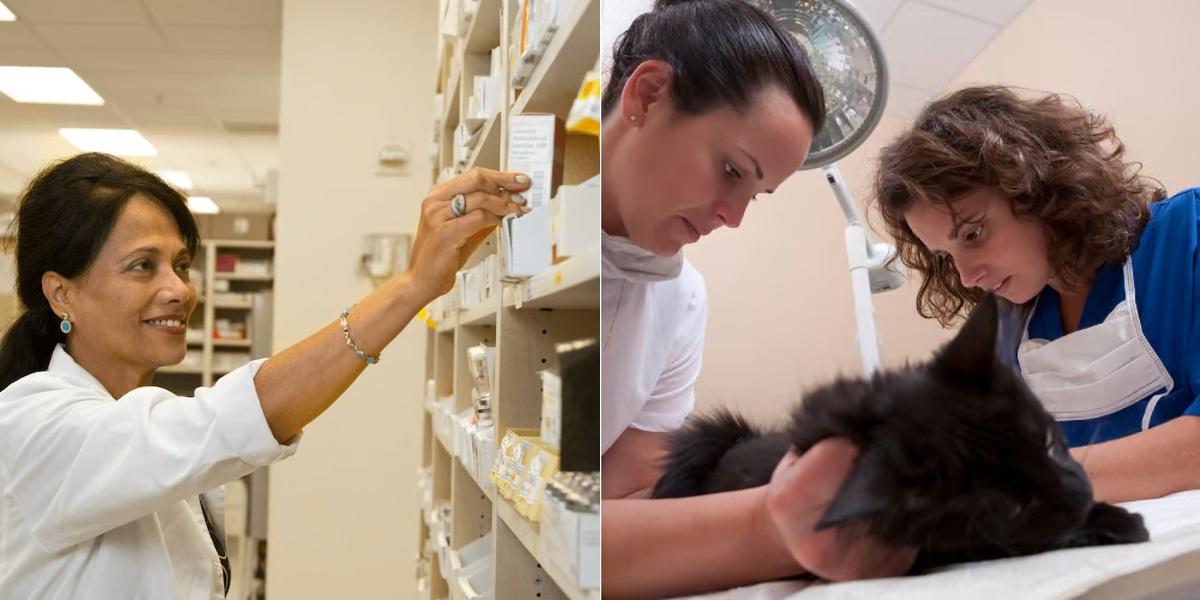Pharmacy Technician vs Veterinary Assistant

Key Points:
- Pharmacy Technicians assist pharmacists; Veterinary Assistants support veterinarians and veterinary nurses.
- Pharmacy Technicians typically earn higher salaries than Veterinary Assistants.
- Both jobs are in demand, but the need for Pharmacy Technicians may be slightly higher.
- Pharmacy Technician training is often available online, while Veterinary Assistant training is usually in-person.
- Pharmacy Technician training is generally more expensive but shorter than Veterinary Assistant training.
The healthcare industry offers a wide range of career opportunities, and it can be overwhelming to choose the right path. Pharmacy technicians and veterinary assistants are both important members of the healthcare team, but their roles and responsibilities differ. Understanding the similarities and differences between these two professions can help you make an informed decision about which career path is right for you.
Pharmacy Technician vs Veterinary Assistant: Career Outlook and Salary
When considering a career path, it's important to also consider the job outlook and earning potential. Here's a look at the career outlook and salary potential for pharmacy technicians and veterinary assistants:
-
Pharmacy Technician Career Outlook:
- According to the Bureau of Labor Statistics (BLS), the employment of pharmacy technicians is projected to grow 4 percent from 2019 to 2029, about as fast as the average for all occupations.
- The demand for pharmacy technicians is expected to increase as the population ages and the need for prescription medications continues to rise.
- The median annual wage for pharmacy technicians was $34,020 in May 2020, according to the BLS.
-
Veterinary Assistant Career Outlook:
- The BLS does not provide specific data on veterinary assistants, but the employment of veterinary assistants and laboratory animal caretakers is projected to grow 16 percent from 2019 to 2029, much faster than the average for all occupations.
- The demand for veterinary assistants is driven by the growing pet population and the increasing emphasis on quality pet care.
- The median annual wage for veterinary assistants and laboratory animal caretakers was $28,590 in May 2020, according to the BLS.
Final Thoughts
Choosing a career path can be a challenging decision, but understanding the similarities and differences between different roles can help guide your choice. Both pharmacy technicians and veterinary assistants play important roles in the healthcare industry, but their job descriptions, education and training requirements, and career outlooks differ. Consider your interests, strengths, and long-term goals when deciding which path is right for you.
Dreambound's program is accessible in diverse locations. Take a deep dive into these blogs for comprehensive insights into the two vocations, covering their requirements and guidance on joining:

Marce Arnejo is part of the Sales team at Dreambound. Her role involves seeking out schools and institutions to provide valuable opportunities for students seeking a career in the healthcare sector. Beyond her professional life, Marce is passionate about music and gaming. She finds joy in exploring various genres of music and using gaming to unwind and immerse herself in virtual worlds. Her diverse interests enrich her personal life and contribute to her work by bringing new ideas and creativity.



